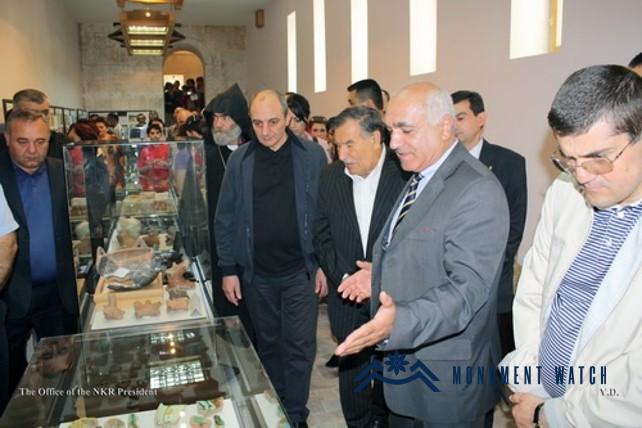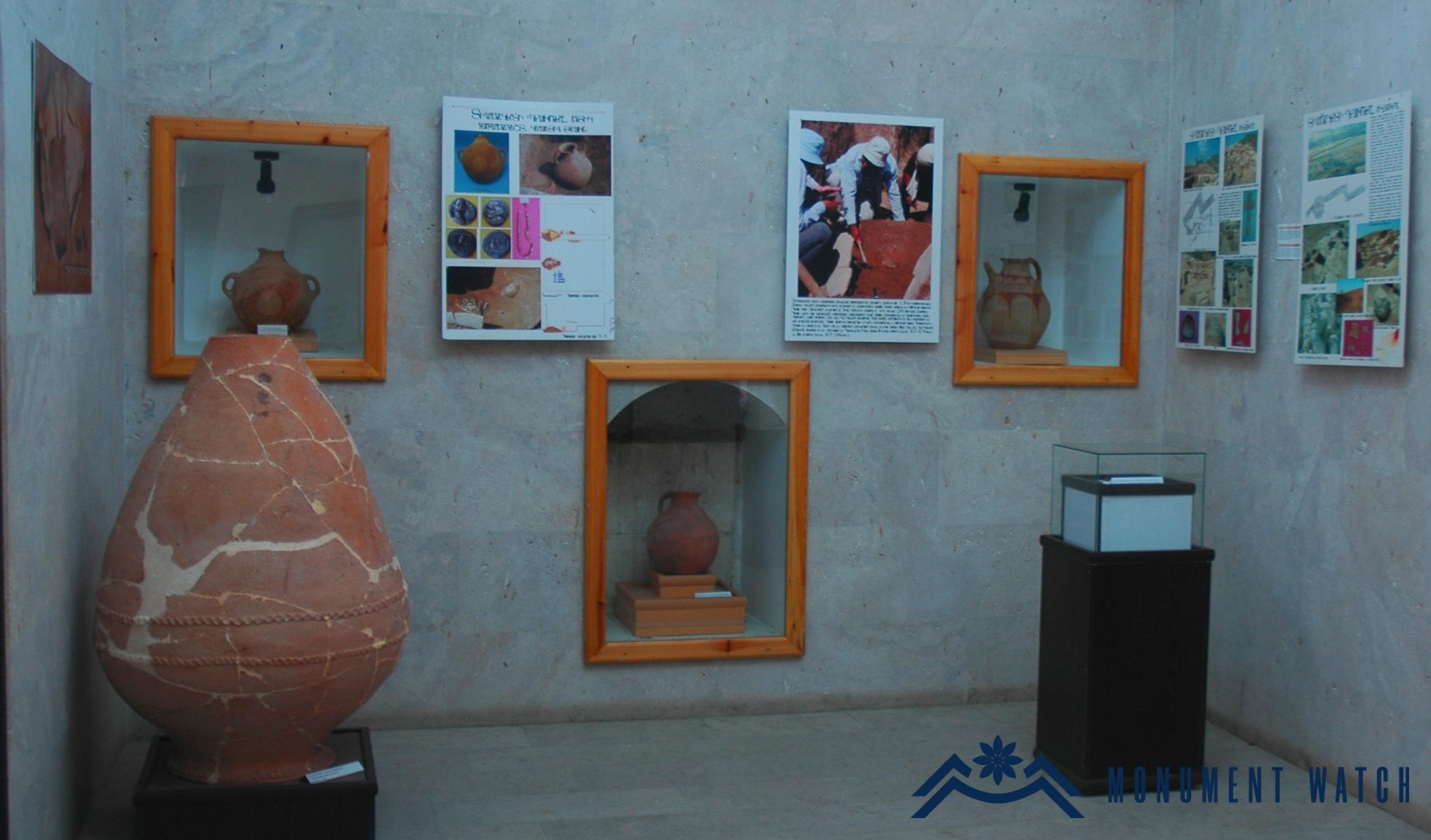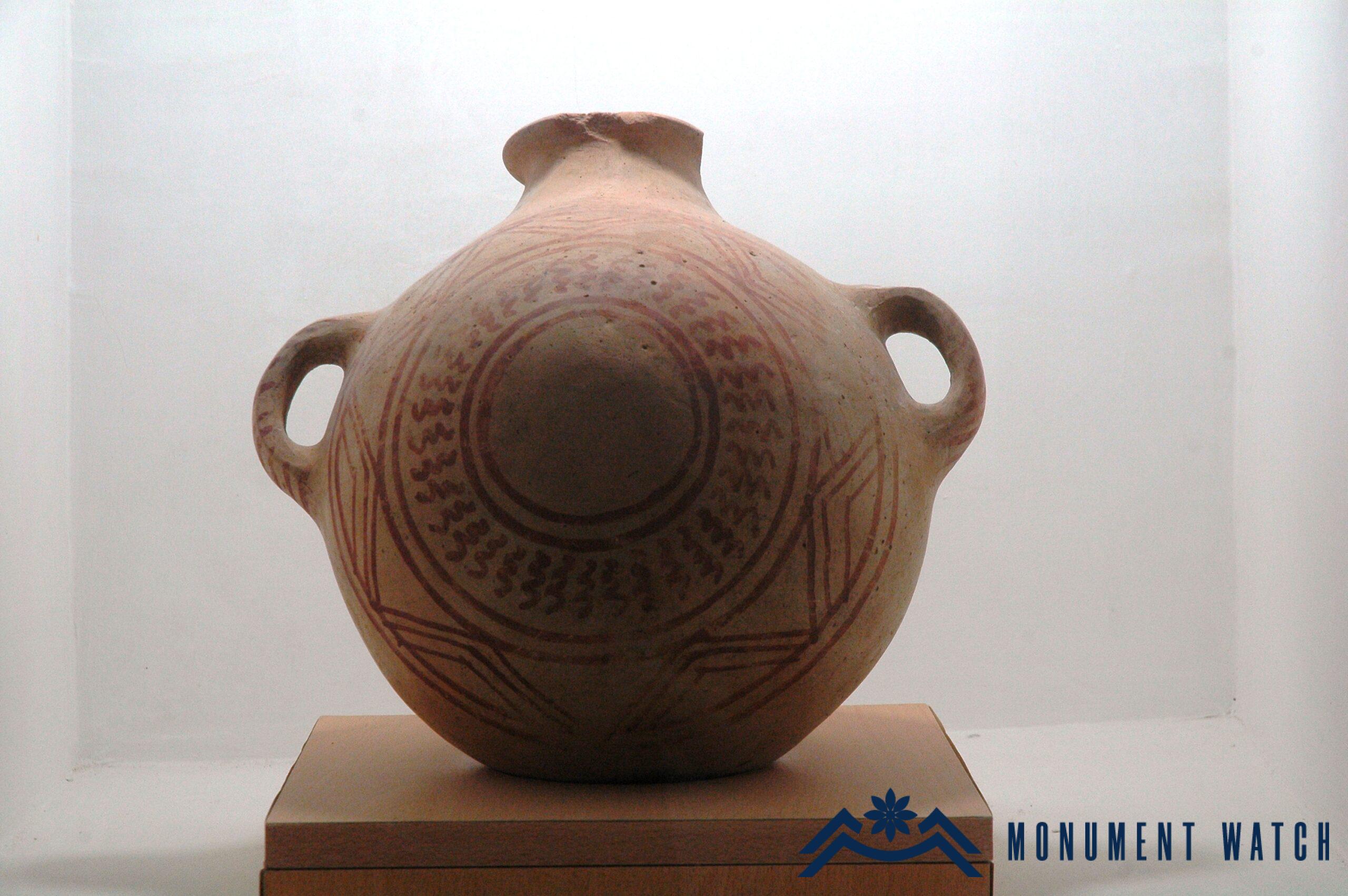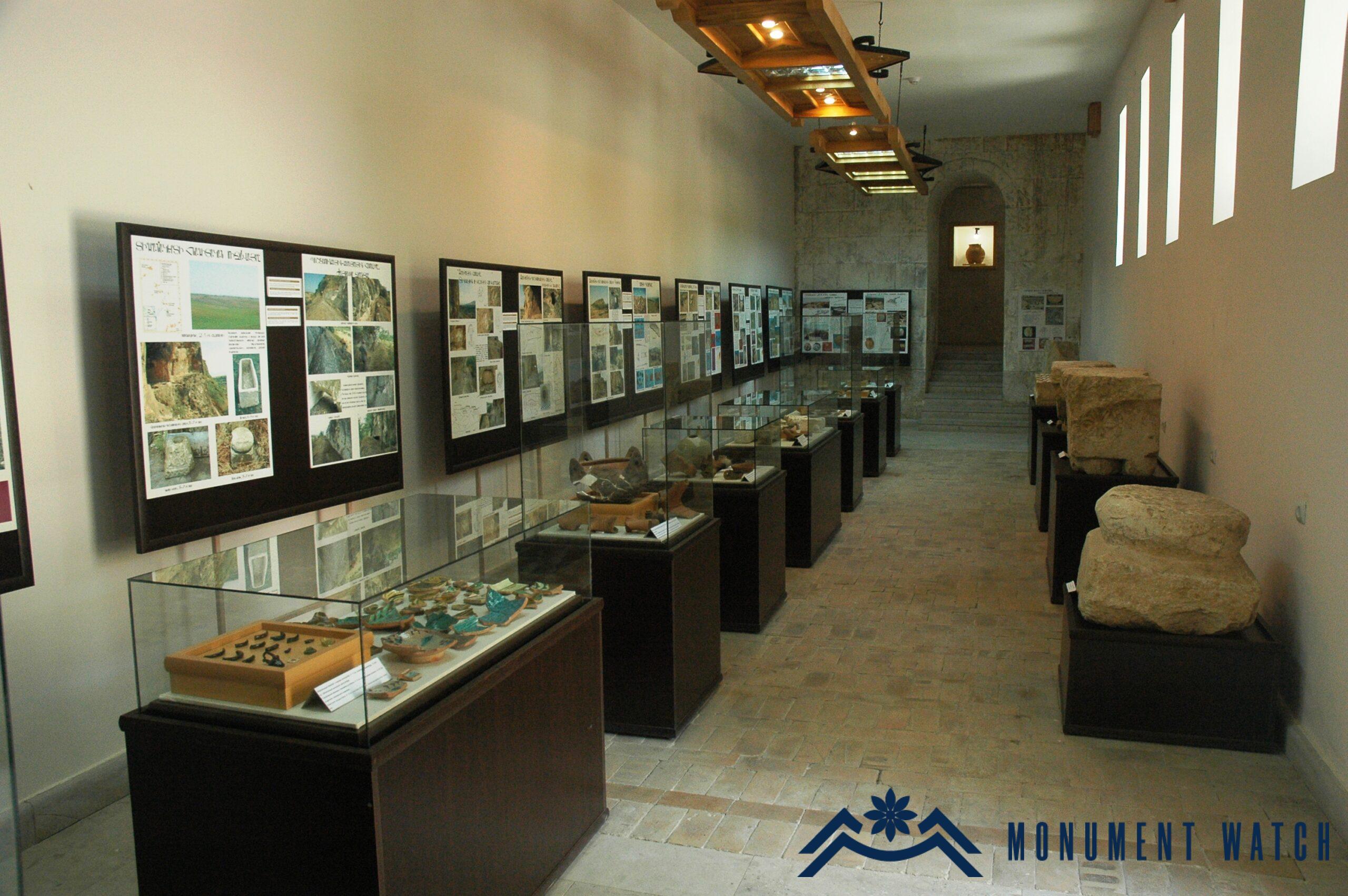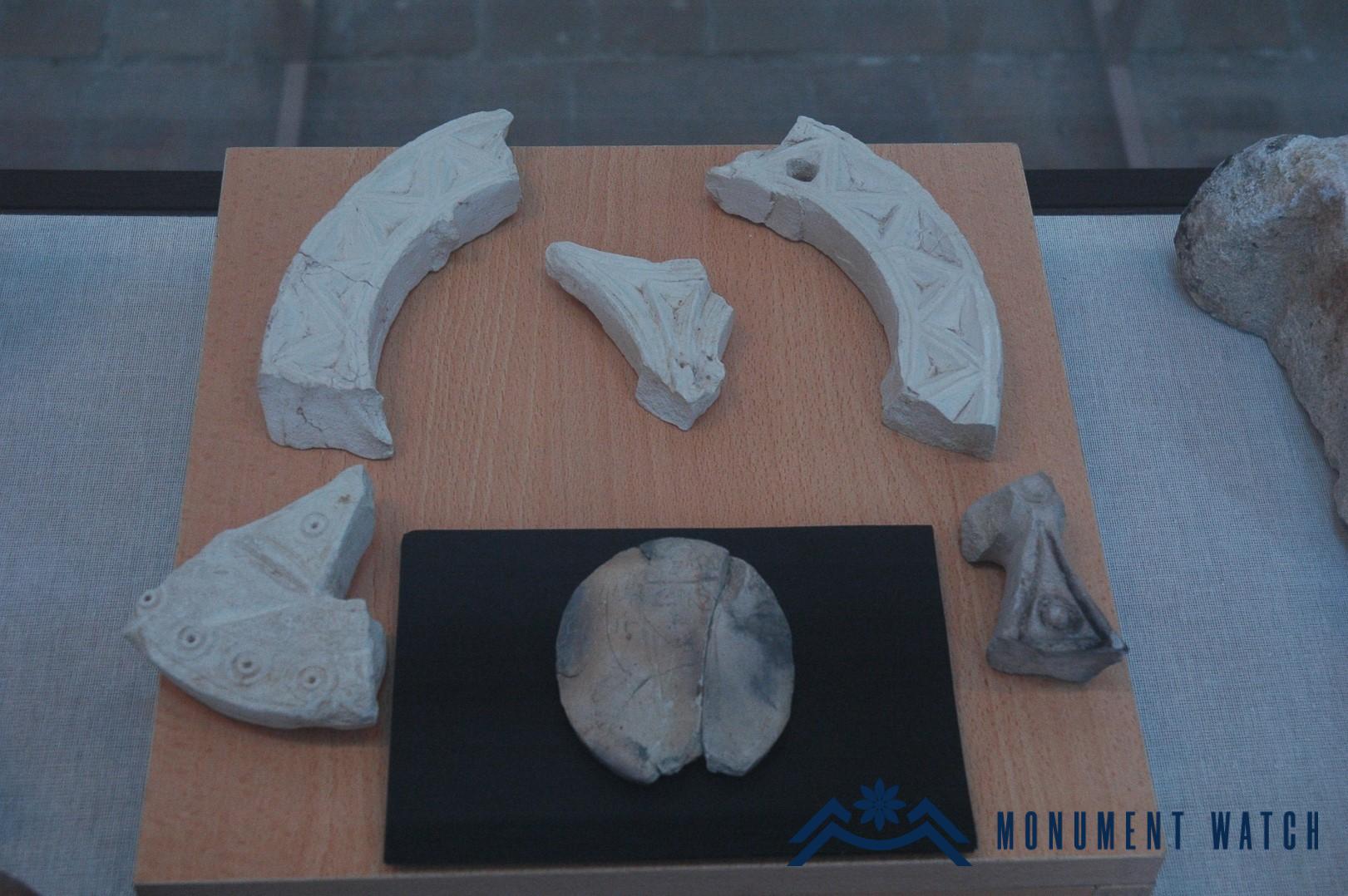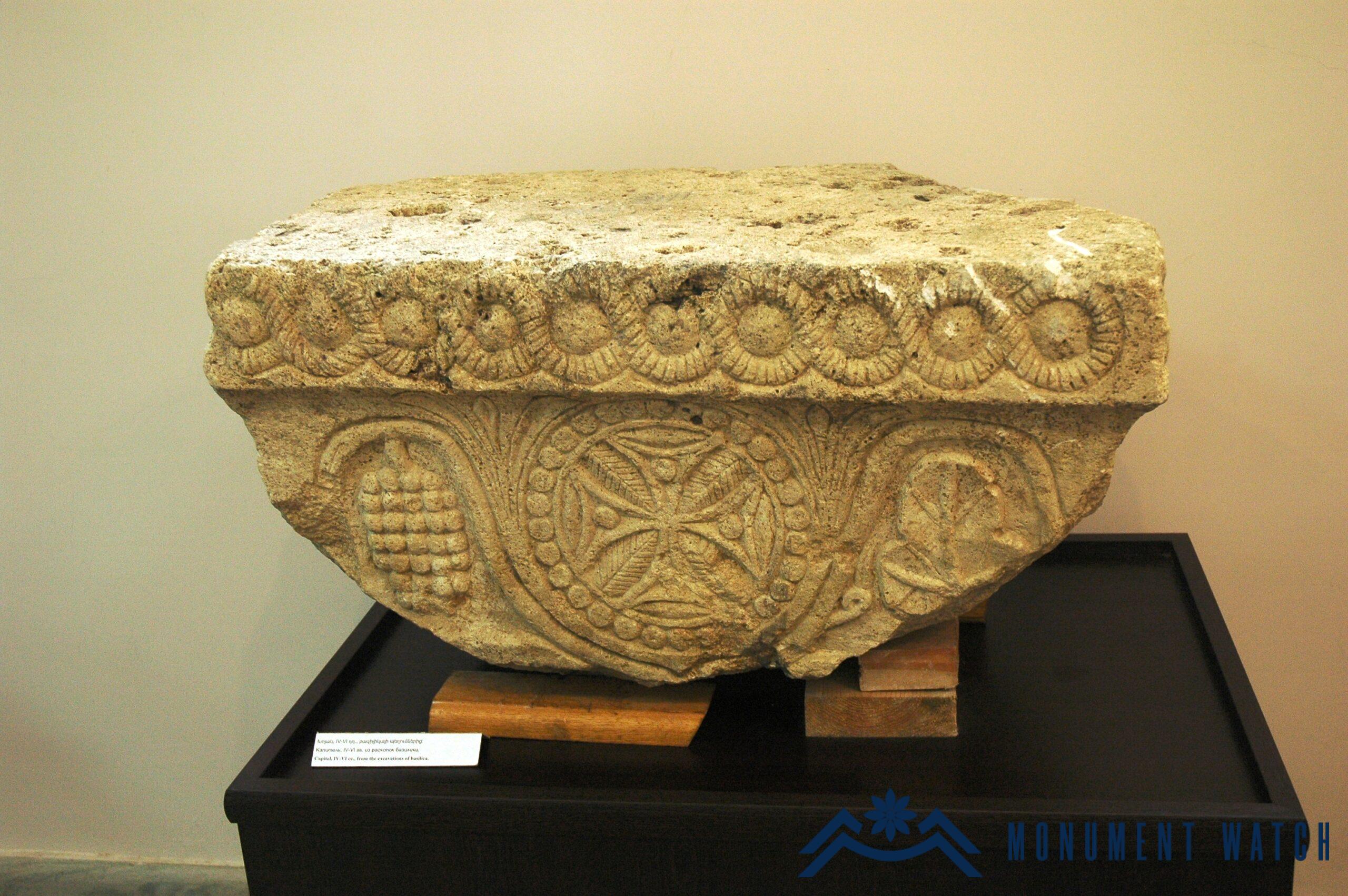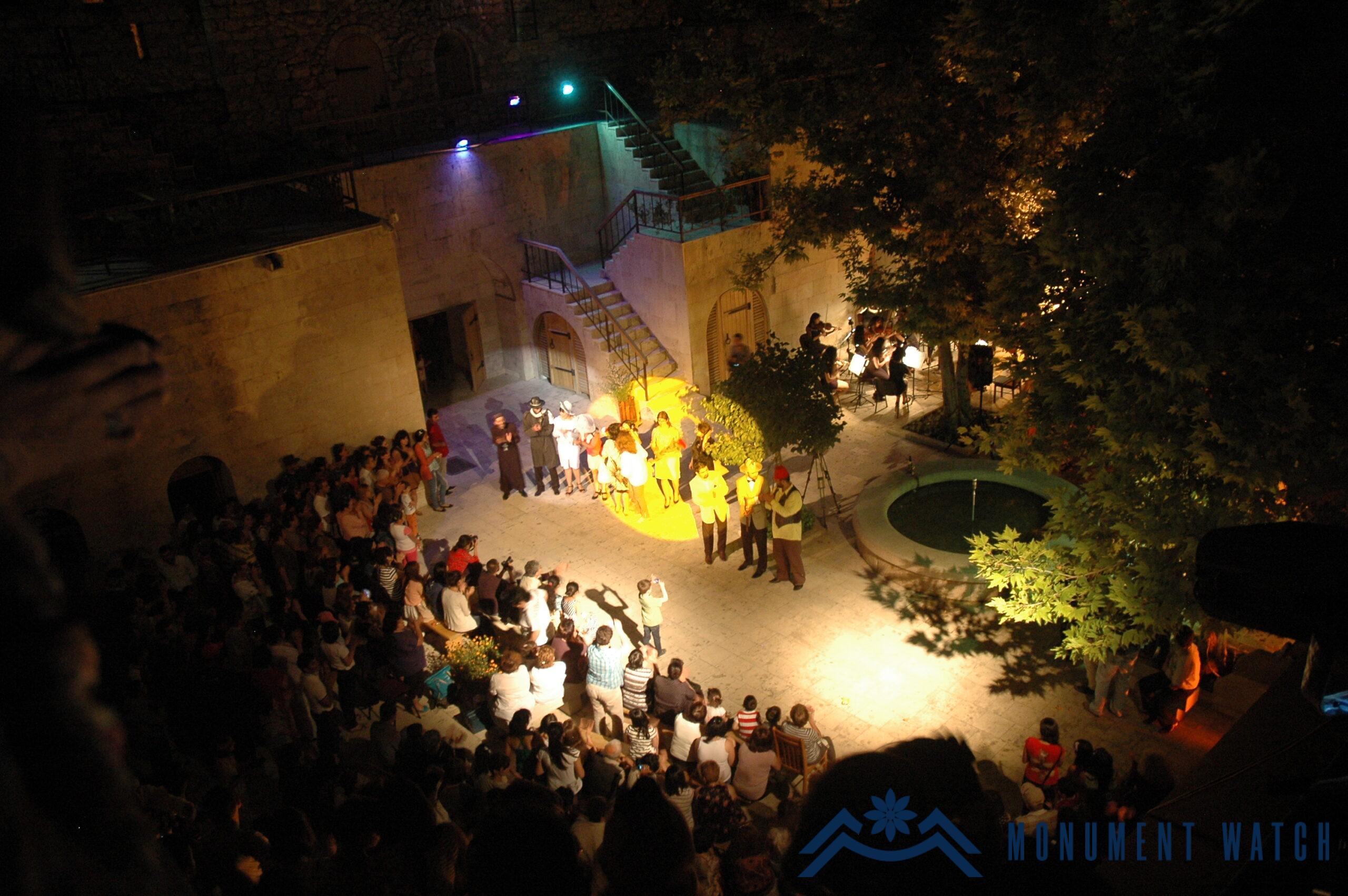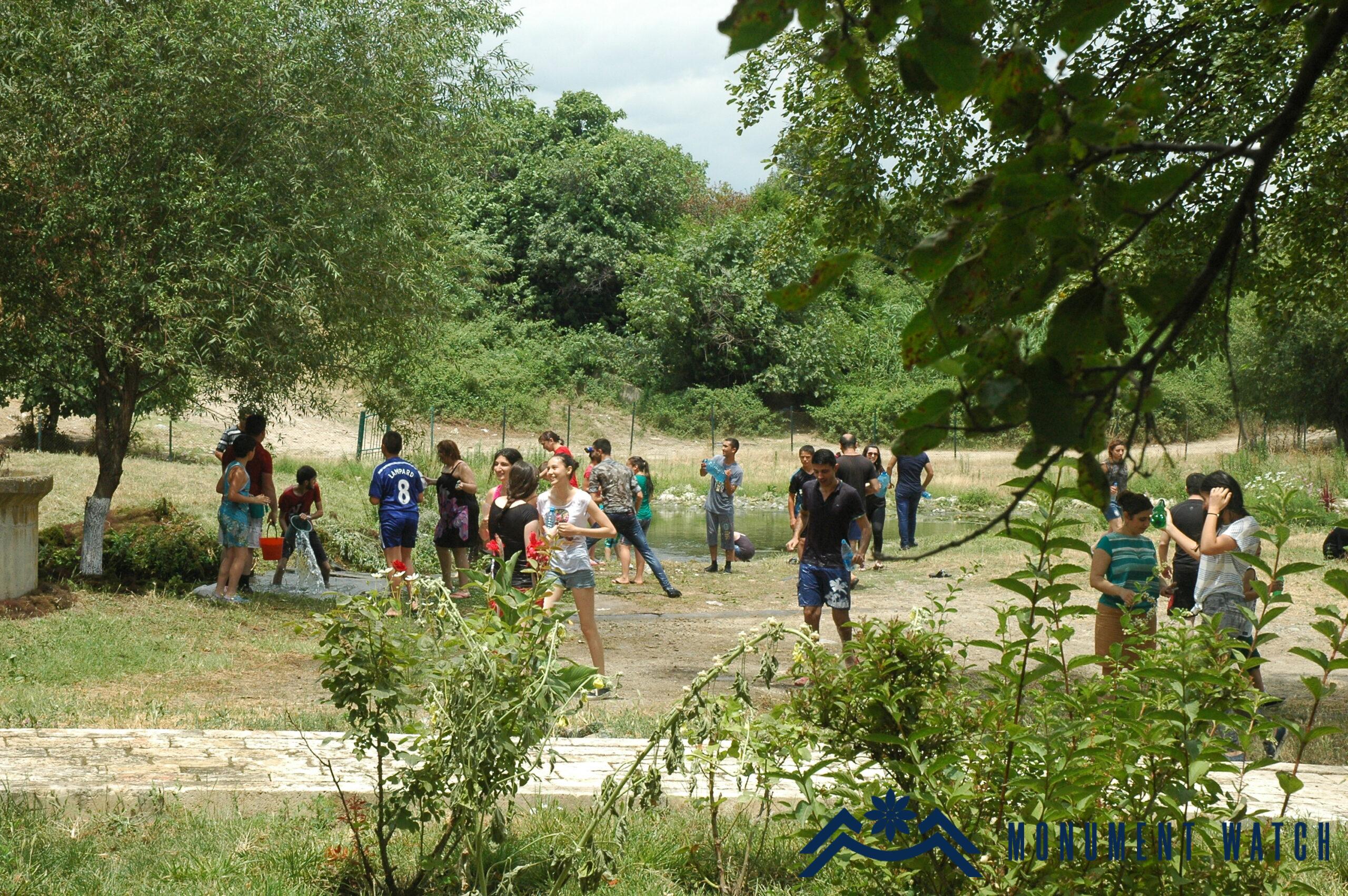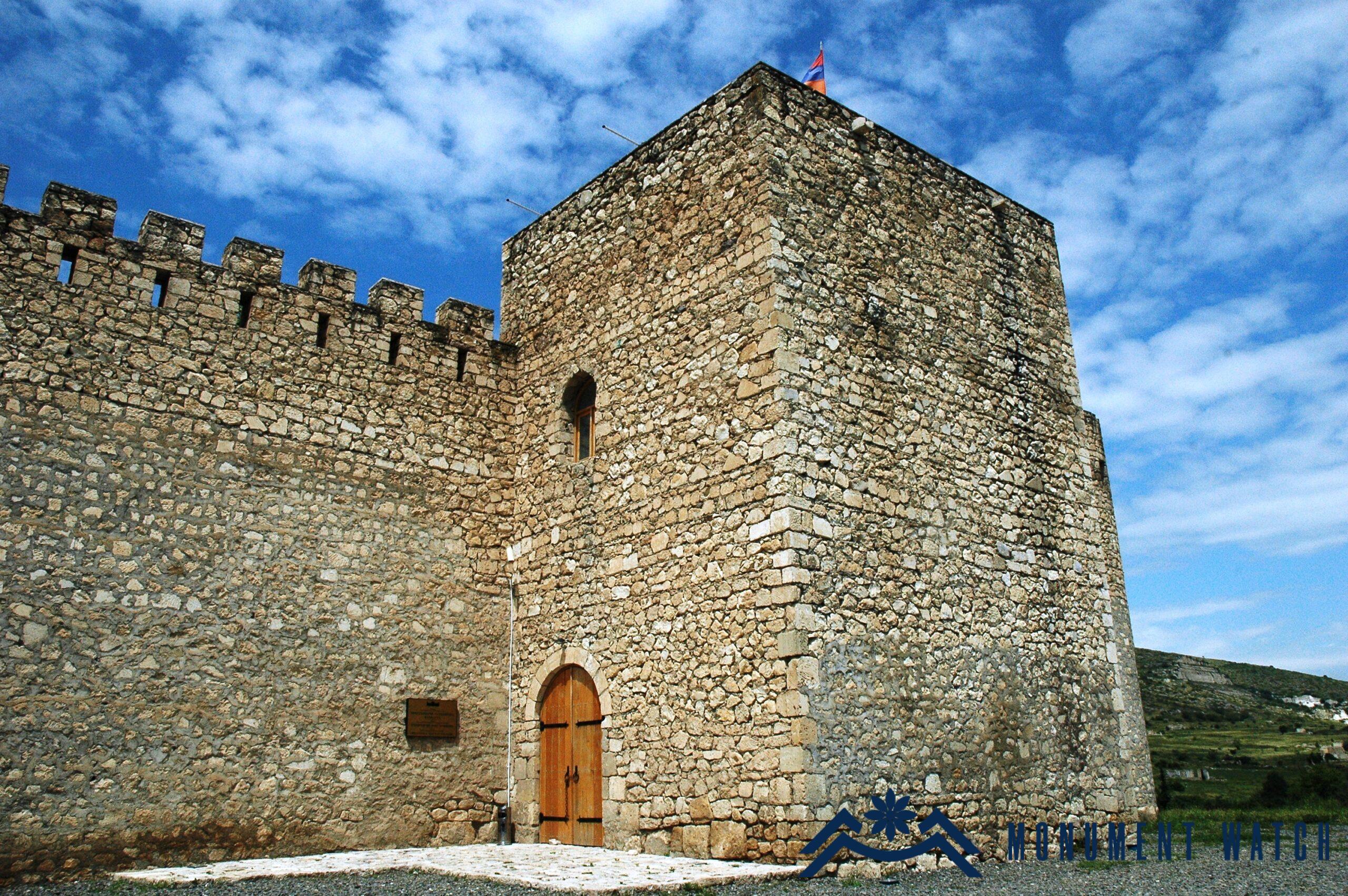
The Archaeological Museum of Tigranakert
History
The Tigranakert Archaeological Museum is located in the Askeran region of the Republic of Artsakh, on the left side of the Askeran-Martakert highway. The museum showcases the history and discoveries of the ancient city of Tigranakert, founded in Artsakh by the Armenian king Tigranes II the Great (95-55 BC). The artifacts and materials unearthed during the excavations, conducted by the Artsakh expedition of the Institute of Archaeology and Ethnography of the National Academy of Sciences of the Republic of Armenia since 2005, are displayed in the museum.
The museum was established at the initiative of the Tourism Department of the Republic of Artsakh. To accommodate the museum, the 18th-century fortress on the site was renovated. Part of the rooms lining the perimeter of the courtyard were converted into museum exhibition halls (Fig. 1).
The ceremonial opening of the museum took place on May 30, 2010. In addition to official guests, thousands of people from various parts of Armenia and Artsakh attended the event. It was a true folk festival featuring performances and concerts, exhibitions and sales of folk crafts, and tastings of delicious Artsakh snacks and drinks (Petrosyan, Kirakosyan 2010, 131-132; Fig. 2).
The collection
In the Tigranakert Museum, some of the finest artifacts discovered since the excavations began in 2005 are displayed. The museum consists of a lobby and two exhibition halls. The lobby is equipped for screening films related to Tigranakert and also hosts temporary exhibitions. The main materials from the excavations of the tombs at Nor Haykajur and Nor Karmiravan, two monuments related to the Bronze Iron Age culture around Tigranakert, are presented in the exhibition halls.
The main exhibition dedicated to Tigranakert unfolds in two connected halls.
The first hall serves as an introduction. It features displays about the discovery of the city and the excavations of the Fortified Quarter and the ancient mausoleum, with the information presented on stands hanging from horizontal poles (Fig. 3). In niches built into the walls, some of the most remarkable complete antique and medieval vessels are showcased. Archaeological materials found in the immediate surroundings of the city are displayed on a glazed table, while publications about the excavations are housed in cabinets (Petrosyan, Kirakosyan 2010, 131-132; Fig. 4).
In the second hall, the exhibition is organized into three series. Stands attached to vertical panels illustrate the excavation process of Tigranakert using textual, drawing, and photographic materials (Fig. 5). The excavated materials are displayed on rectangular and square tables covered with glass. These tables primarily exhibit small objects made of ceramics, glass, stone, and bone. The collection is diverse and extensive, featuring antique painted ceramics, medieval glazed ceramics, fragments of early Christian khachkars and cross compositions, glass vessels, and bracelets, and a clay disk with an Armenian inscription (Petrosyan 2016, 345-346; Fig. 6). In the third row, larger architectural elements from the basilica church are displayed on open tables, including a column base, a column, sculptural capitals, and cornice fragments (Petrosyan, Kirakosyan 2010, 131-132; Fig. 7).
The activity of the museum before the war
The archaeological museum of Tigranakert and the research of the monument, in general, is one of the most successful initiatives of recent years in discovering, researching, and popularizing the Armenian cultural heritage and making it part of the current cultural process.
The museum had become a cornerstone of Artsakh's cultural policy. Opening a museum adjacent to an excavated monument was a novel practice in Artsakh, with Tigranakert being the first example of this approach.
The museum had about thirty thousand visitors a year. Although the Republic of Artsakh was not an internationally recognized state, and the governments of many countries did not advise their citizens to visit Artsakh, twenty percent of the museum's visitors were foreigners and Diaspora Armenians, among whom there are especially many citizens of Switzerland, the USA, Italy, Canada and France.
Various cultural events (Fig. 8) and intellectual games were regularly held at the museum. In recent years, the Vardavar holiday has also celebrated here (Fig. 9). Additionally, events dedicated to the International Day of Museums and European Heritage Days have always been hosted at the museum.
In other words, Tigranakert not only contributed to the popularization of Artsakh's cultural heritage internationally and nationally but also strengthened the sense of pride among residents. It connected them more deeply to their geographical environment and became a sacred center for the resettled people in the area (Petrosyan, 2022, pp. 185-186).
The condition after the war
During the 44-day war, Tigranakert was subjected to enemy shelling multiple times. As a result, the archaeological site of Tigranakert was destroyed. However, through the efforts of the Artsakh authorities and the Tigranakert research team, the museum collections were evacuated and are now in a safe location.
After the 44-day war, it can be seen from various videos that the museum building is standing, but the Azerbaijanis have turned the Park of Royal Springs in Tigranakert into a barbecue restaurant (https://monumentwatch.org/en/alerts/azerbaijanis-turned-the-park-of-royal-springs-of-tigranakert-into-a-barbeque-restaurant/).
The museum and international law regulations
As with any cultural property, the international legal-legislative basis for the protection of museums and collections is the 1954 Hague Convention for the Protection of Cultural Property in the Event of Armed Conflict and its two protocols (1954 and 1999). According to Article 4 of the 1954 Hague Convention, any acts of vandalism, theft, robbery, misappropriation, hostilities, and reprisals against cultural heritage are prohibited. Furthermore, according to the first Hague Protocol of 1954, it is forbidden to destroy cultural or spiritual values in occupied territories. The Second Hague Protocol of 1999 reaffirms this requirement and classifies such acts as international crimes under Article 15. The destruction of cultural values is also prohibited by four international conventions and protocols on the protection of war victims, the laws and customs of war established in the Geneva Conventions of August 12, 1949, as well as relevant UN resolutions and human rights treaties.
Bibliography
- Petrosyan, Kirakosyan 2010 - Petrosyan H., Kirakosyan L., Tigranakert Archaeological Museum, Museum, 130-132.
- Petrosyan 2022 - Petrosyan H., The Odyssey of the Tigranakert Archaeological Museum of Artsakh, Works of the History Museum of Armenia, N 10, 183-188.
- Petrosyan 2016 - Petrosyan H., Tigranakert of Artsakh, Aramazd, vol. X issues 1-2, Oxford, 327-371.
